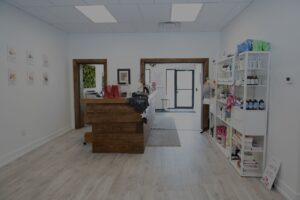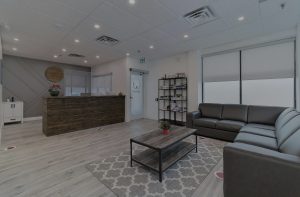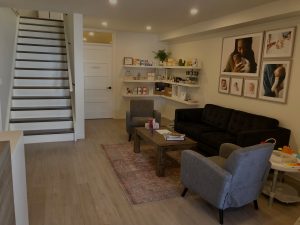
When the blue line appears or the agency calls to announce the good news, your first thought is probably exultation — your family’s about to get bigger! But then… the doubt, anxiety and fear creep in. After all, you want to be the best parent possible, but. oh. my. goodness! You’re about to be responsible for the care of a helpless newborn. Yikes!
All new parents experience these crazy emotions—and when you have a disability to compound the changes, your stress may double or triple. But it doesn’t have to. The first few weeks after your baby’s arrival are the most challenging, but planning your new life, adapting your home, and setting up a dependable support system, should facilitate a smooth transition to parenthood.
Mental preparations
Not much trumps snuggling with a newborn. A newborn brings powerful joy—and sleepless nights, complete chaos, feelings of inadequacy, and worry that you’re doing it wrong.
Make a plan to take care of yourself during those early weeks—self-care is critical to maintaining your sanity. Whether it’s a cup of tea or an hour out while she hangs with the sitter, make time to rejuvenate your spirit. Know what helps you relax before your baby arrives, so that it’s easy to request assistance, plan a weekly lunch date, or schedule that house cleaning.
If you’ve got very little experience with brand, new tiny humans, educate yourself. Learn how to establish routines. You’ll quickly discover that just when you get the hang of things something changes. But, a plan and a healthy sense of humor go a long way to helping you feel prepared.
Acknowledge your limits. With a physical disability, it’s best to determine ahead of time what you can and can’t do, where you’ll need the most help, and how to adjust for everyone’s safety.
Home adaptations that make childcare easier
While your specific disability will dictate the changes you’ll need before the peanut arrives, here are some suggestions:
- Replace steps with a ramp with railings on both sides; or add a ramp and keep the steps.
- Use expandable hinges for doorways — a much more cost-effective way to increasing the width by 2-inches.
- Installing skid-resistant flooring to prevent slips in the bathroom, kitchen, stairs and other uncarpeted rooms.
- Replace door knobs with lever handles.
If you find that your home requires more extensive modifications, there’s a wealth of information and resources available. This article on home remodeling for parents with disabilities from Redfin.com is a great place to start.
Get the right equipment
Babies require an insane amount of stuff. From high chairs to changing tables and monitors to diaper genies, it won’t be long before your home resembles a baby supply store. This equipment does make child care easier, and more companies are recognizing the importance of designing equipment that works for people with or without disabilities.
Parents, who are hearing-impaired, can purchase baby monitors and alarms with flashing lights. High chairs have a variety of options, many of which are adjustable and include easily removable and cleanable lightweight parts.
Adjustable cribs are a boon for parents who use wheelchairs. These cribs also work great for changing your baby’s diaper or clothing.
Other equipment that you might consider includes:
- Chest harness baby carriers
- Accessible baby bathtubs
- Accessible strollers that snap to wheelchairs
- Breastfeeding slings
- Boppy baby chairs and two-sided nursing pillows
- Swivel base baby car seats
In one study, disabled parents named night care, bathing, and carrying babies as their biggest challenges. The study also concluded that furniture adaptations, assistance from caregivers and other supports make infant care absolutely doable.
Resources are out there. Don’t be afraid to reach out. Talk to your doctor, find a support group, and take classes to help you learn skills and tricks from others with similar experiences. And as your new life unfolds, embrace and enjoy the wonder and new memories you’ll make.
Photo Credit: pexels.com
Guest Blogger Ashley Taylor is a disabled mother of two wonderful, amazing, energetic children. She met her husband, Tom, while doing physical therapy. Tom had suffered a spinal cord injury due to a car accident and uses a wheelchair for mobility. Ashley and Tom knew they wanted children and knew they would have to adapt their lives and home in order to make this dream come true. Ashley is happy to say that they are the proud parents of two healthy, wonderful children and their disabilities haven’t stopped them from leading a happy, fulfilling life.





